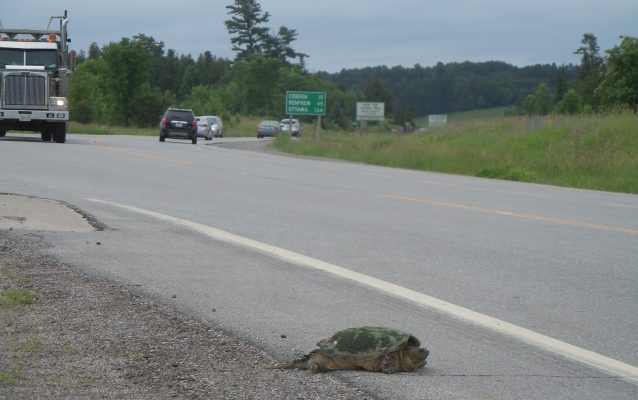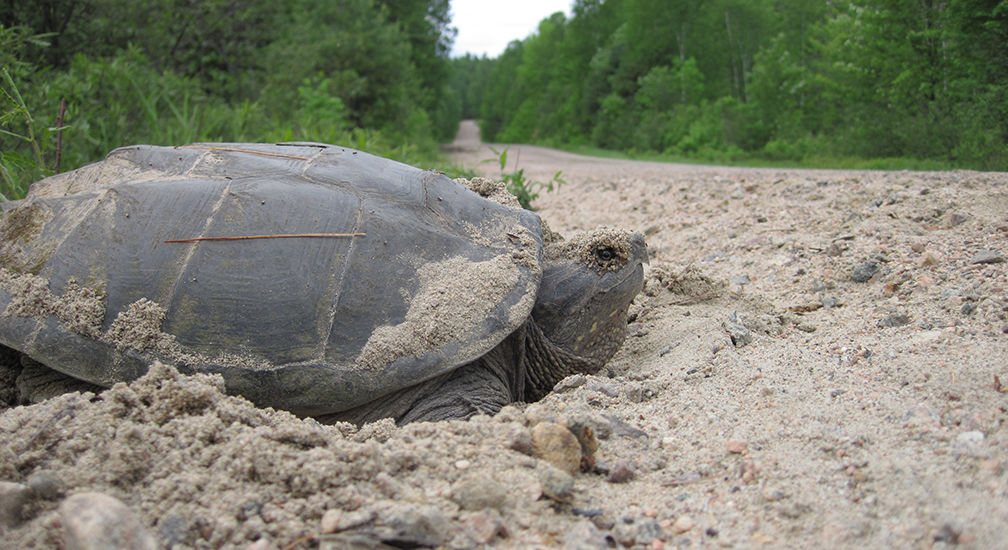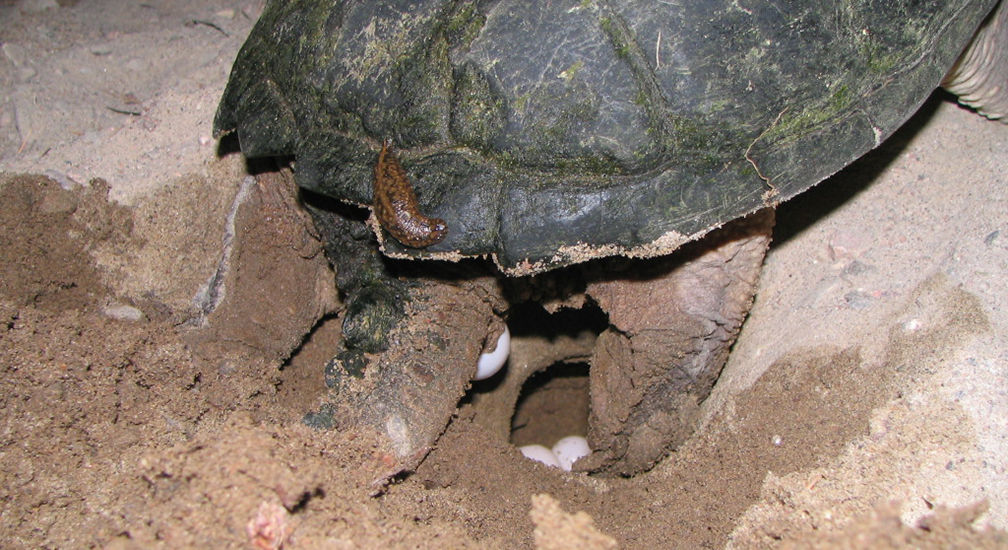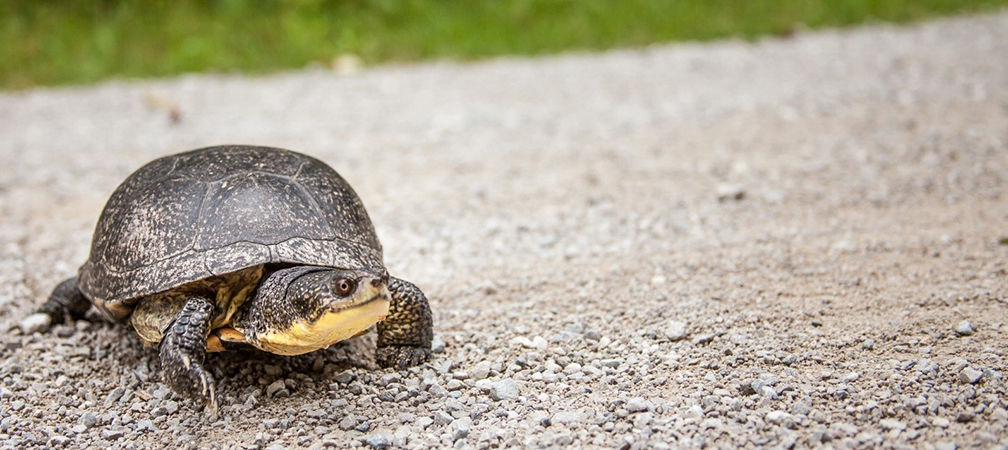Ontario Nature Blog
Receive email alerts about breaking conservation
and environmental news.
© Lora Denis
Blanding's turtle © Diana Troya
Many of us have seen turtles on the road in May and June – they look like dark, round speed bumps or tire pieces. Perhaps you have swerved your car around one, or stopped to help one safely across the road. Why are roads such a major threat to turtle survival and how can you help?
Turtles evolved as a species long before cars were invented, so they don’t naturally know about vehicles and the danger they present.

Biologists believe that turtles can live to over 100 years old, which means there may be individuals living today that were born before motor vehicles first appeared in Canada! Turtles are slow-moving and lack the sharp eyesight that helps other animals recognize the danger of a car moving at high speeds.
With the odds stacked against them, why do turtles cross the road?

Turtles encounter roads on their search for a mate or nesting site during spring and summer. The sand and gravel on the roadside is ideal for digging and laying their eggs in.
On the Bruce Peninsula, researchers Tricia Stinnissen and Jim Schaefer, discovered turtles were often on the road when those roads were within 1 km of a wetland. In southern Ontario, there are over 35,000 kilometres of roads. No matter where you stand, a road will be no more than 1.5 kilometers away.
Only 1 percent of all eggs laid by turtles make it to adulthood and many don’t reach adulthood until 15 years of age.
Throughout their lifetime, turtles face a variety of threats that are not limited to road mortality; these reptiles are also constrained by habitat loss, poaching and increased predation by skunks and raccoons. Anything we can do to reduce turtle road mortality will help Ontario’s turtle populations.


All of these are great ways to help turtles during the active season. And truthfully, you feel pretty amazing when you help one.

Proposed 413 Route, Old School Road with farm and escarpment view © Noah Cole
Hi I’d like to download the App for reporting dead or alive reptiles etc but the link to the app doesn’t work and the only thing I can find in the App Store has to do with hunting. Can you please tell me what the app is called so I can download it? Thank you for your time.
Hi Delora,
Now that we have discontinued our app and online form, we encourage you to continue submitting any future observations through the ‘Herps of Ontario’ project on iNaturalist or directly to the Natural Heritage Information Centre for species at risk. To learn more about the transition, read our blog.
My parents had a painted turtle lay eggs on their front lawn on Long Point. Is there anything they can do to help support the eggs to safely hatch?
Helped a little turtle cross a highway the other day. Show some love and respect people, and help them if its safe. They aren’t quick, but if we share the world with them we should live in harmony.
Wonderful article with great resources! Thank you so much for posting, and I hope that it is shared often, we just saw a snapping turtle dangerously close to the road, but dad wasn’t as keen to stop to help as he would have been if it was a cute little guy instead. The video was awesome, and the advice regarding a nesting turtle was valuable as well! Happy Turtle Day!